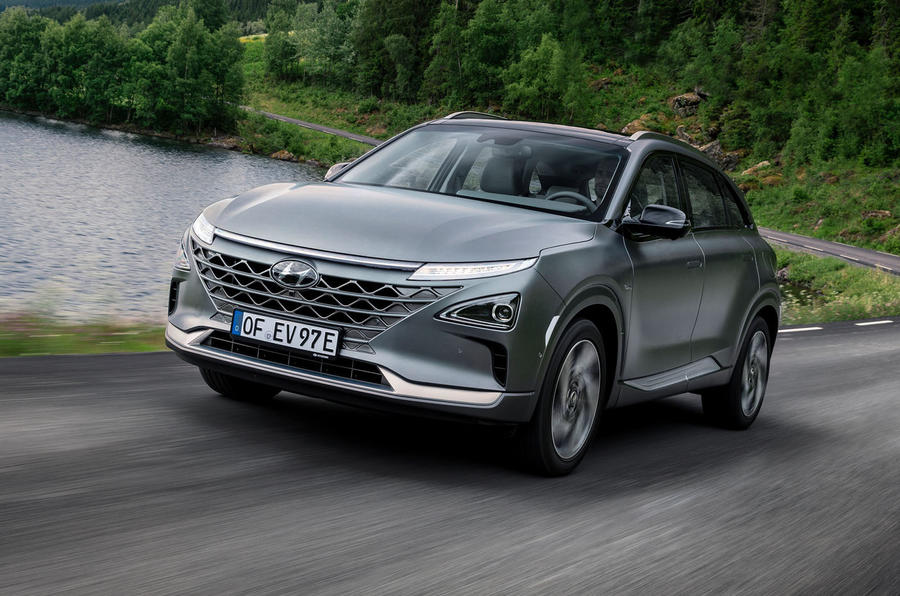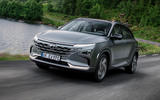What is it?
The Hyundai Nexo is one of only a handful of hydrogen fuel cell vehicles that you or I could walk into a showroom and actually buy.
It plays the parts of high-riding urban runabout, undemanding motorway hack and versatile family car rather well. As we’ll discover, this is a perfectly adequate machine and there is plenty to like about it. But as we’ll also discover, it suffers from the same chicken-or-the-egg problems of other hydrogen cars like the Toyota Mirai and Honda Clarity that prevent it from being something we can all enjoy. We’ll get to that in a bit too.
The Nexo picks up where the ix35 Fuel Cell, launched in 2013, left off. It was the world’s first mass-produced fuel cell vehicle. Unlike that car, though, which was an adapted version of an existing model, the Nexo was created from the ground up specifically for this purpose. As well as making it lighter, that means the Nexo is more efficient.
Take the bodywork, which has been designed to be as slippery as possible. The underside is completely flat, there are air curtains that reduce drag front and rear and the door handles sit completely flush with the bodywork, popping out only when you need them. Even the wheels have been designed with aerodynamic efficiency in mind.
Then there are the hydrogen tanks. The Nexo has three, all mounted transversely across the rear of the car. They look like oversized scuba diving cylinders. Two are just ahead of the rear axle line, the third just behind it. By using three tanks – with a total capacity of 157 litres – rather than two like the ix35, the packaging is neater and boot space is preserved.






















































Join the debate
Add your comment
Nexo
No thanks. All around ugly and in particular the center console.
MPG please
It'll be barely any different from the last Hydrogen joke car test. A poor 25 mpg, people won't put up with that when you can get 150+ from a BEV. Amazing how a jolly can put a shine on things, time for Toyota and Hyundai to admit they went down the wrong path.
H2 has already lost
Hydrogen comes either from adding energy to fossil fuels (90% of it last time i looked), or from hydrolysis. Using electricity for generating H2 from water and then back to electricity in a car is crashingly inefficient.
Nobody has H2 charging at home, almost everyone has electricity.
For long journeys the ev charging infrastructure is already rolling out.
Meantime the Tesla Model 3, is half the cost, MUCH more efficient, better performing, easier to charge... and rolling off the line at 5000 per week.
Obviously THAT'S the most important car on sale today.
This hyundai will be consigned to history as a curious but irrelevant side show.